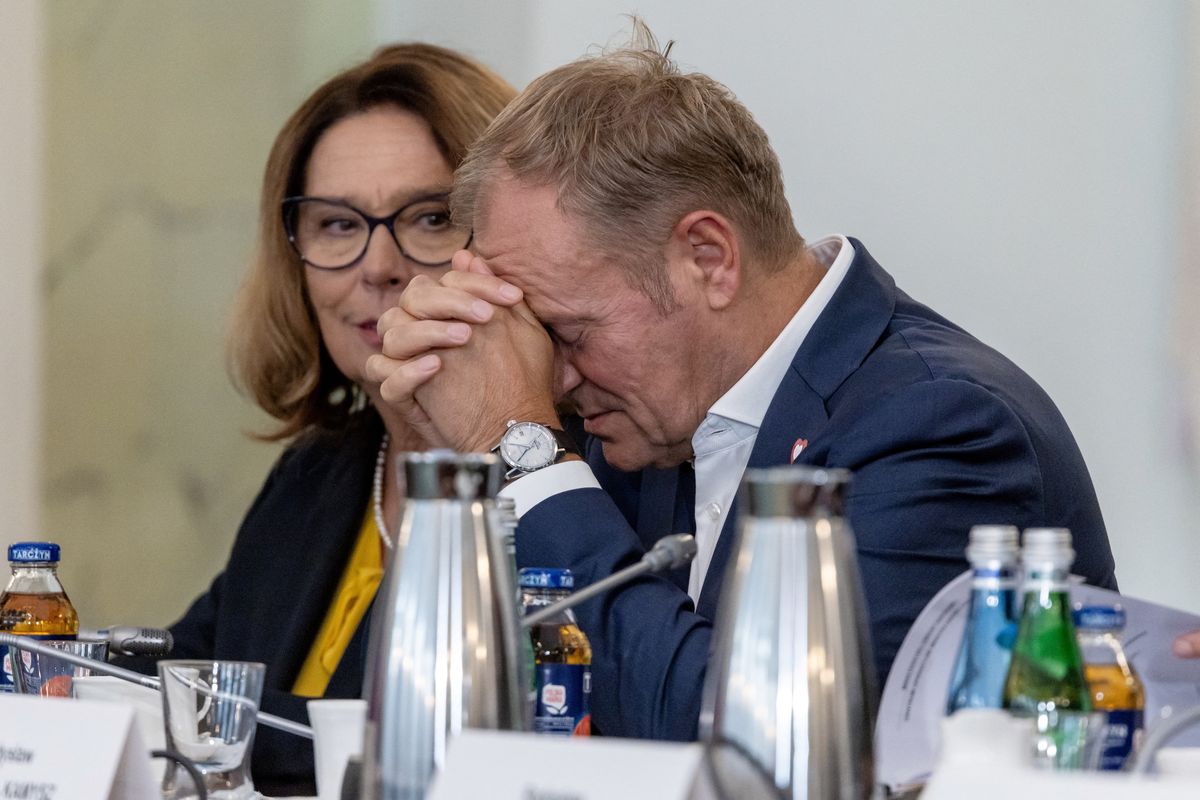In an apparent reversal of more than 200 years of military neutrality, Sweden’s governing party on Sunday, announced that it will support an application to join NATO. The bid follows an announcement from neighboring Finland, that it will also seek membership in the alliance.
The move will undoubtedly upset Russian President Vladimir Putin, who launched a bloody invasion of Ukraine in February – in part – to keep NATO as far as possible from Russia’s borders. “He’s caused Germany to double their defense budget,” Cipher Brief Expert and former NATO Supreme Allied Commander Admiral James Stavridis (Ret.) told CNBC. “Every NATO nation is now going to hit its 2 percent goal that we’ve been chasing for years,”
The decisions to seek membership in the alliance follow weeks of muscle flexing by NATO.
In March, NATO Secretary General Jens Stoltenberg presided over an emergency summit in Brussels announcing the creation of four new battlegroups, reinforcing NATO’s eastern boundary.
Join experts from The Cyber Initiatives Group as they assess the likelihood that Russia will launch cyber operations in response to the decision by Sweden and Finland to join NATO. Register for your seat at the expert-led virtual summit on Wednesday, May 25.
The Bottom Line: The southeastern flank of NATO — Bulgaria, Hungary, Romania and Slovakia will receive four new battle groups. Commenting on the expansion, NATO Secretary General Jens Stoltenberg said, “this means that we will have eight multinational NATO battlegroups all along the eastern flank, from the Baltic to the Black Sea.” Stoltenberg noted, “all of this is the immediate response to the Russian invasion of Ukraine,” adding that the forces would remain there “as long as necessary.”
The Background: As the Russian buildup of forces around Ukraine reached its peak in February, the NATO secretary general told a press conference in Brussels: “I regret to say that this is the new normal in Europe. Therefore today, ministers decided to develop options to further strengthen NATO’s deterrence and defense, including to consider establishing new NATO battlegroups in…eastern and southeastern Europe.”
- A NATO statement on the expansion noted, “The land element in the southeast of the Alliance is built around a multinational brigade, under Multinational Division Southeast in Romania. At sea, NATO has deployed more ships and has conducted more naval exercises. In the air, Allies have intensified their training, which contributed to improved situational awareness and enhanced readiness.”
- The affected member states – with the notable exception of Hungary – have been receptive to the planned military buildup. In January, Romanian President Klaus Iohannis said, “the security crisis created by Russia is not just about Ukraine . . . but about the security of the entire Euro-Atlantic area. Russia, he said, wanted to “unacceptably change the parameters of the European security architecture.”
- After earlier signaling opposition to a buildup of NATO forces, in early March, Hungary announced that it would allow troops to deploy in western parts of the country and would also allow weapons shipments to cross its territory to other NATO member states.
- At the NATO summit, Hungarian Prime Minister Viktor Orban said, “It has been accepted that we will not send weapons; neither will weapons be allowed through Hungarian territory on the way to Ukraine.” At the same time, Orban noted that NATO will strengthen central European countries neighboring Ukraine and that NATO forces will be stationed in Hungary in a defensive role.
- Specifics about the new battle group compositions have been sparse, but according to a security issues expert at the Center for European Policy Analysis, NATO appears to be “starting to shift away from this posture of deterrence by tripwire to deterrence by forward defense.” Lauren Speranza commented, “This is an overdue move to try and rebalance NATO’s force posture to make sure the alliance’s southeastern flank is reinforced in the same way the northeastern part is.”
The Experts: The Cipher Brief tapped Col. Mark Cancian (Ret.), Senior Advisor at the International Security Program at the Center for Strategic and International Studies and Bryan Clark, senior fellow and director of the Center for Defense Concepts and Technology at Hudson Institute for their perspective on the significance of these new battlegroups and what it means as the war in Ukraine continues.
Col. Mark Cancian (Ret.), Senior Advisor, International Security Program, CSIS
Mark Cancian (Colonel, USMCR, ret.) is a senior adviser with the CSIS International Security Program. He joined CSIS in April 2015 from the Office of Management and Budget, where he spent more than seven years as chief of the Force Structure and Investment Division, working on issues such as Department of Defense budget strategy, war funding, and procurement programs, as well as nuclear weapons development and nonproliferation activities in the Department of Energy.
Bryan Clark, Senior Fellow & Director, The Hudson Institute
Bryan Clark is a senior fellow and director of the Center for Defense Concepts and Technology at Hudson Institute. He is an expert in naval operations, electronic warfare, autonomous systems, military competitions, and wargaming.
The Cipher Brief: In addition to the sheer numerical increase of NATO forces in Bulgaria, Hungary, Romania and Slovakia, does the NATO decision signal an expansion or rethinking of strategic goals?
Col. Mark Cancian: I would describe it as a modest expansion of NATO forces given that there are already four existing battle groups. Still, I think it is significant certainly for the four countries affected and extends a small, but visible, NATO presence to that particular region.
Clark: Doubling the number of NATO battlegroups reflects a substantial increase in the commitment of especially western NATO allies to the defense of NATO’s eastern flank. Sustaining another 4,000 to 5,000 troops will be costly and will tie up a significant portion of the ready troops from the UK, France, and Germany. It also signals NATO’s recognition of the continued threat that Russia may attempt to escalate with an attack on NATO in an attempt to cause the West to back down its support of Ukraine. And because the new battlegroups are focused on the southeast edge of NATO, the deployment also signals an expectation on NATO’s part that the threat from Russia could emerge along its entire border with NATO from Estonia to Bulgaria.
The Cipher Brief: How well prepared is NATO to absorb and sustain the requirements of deploying new battle groups in terms of logistics and C3I (communications, command, control and intelligence)?
Col. Cancian: Of course, the willingness to take on new requirements is prompted by the current crisis in Ukraine, which has resulted in NATO states committing to boost their military budgets significantly above previous levels. Prior to the current crisis, it was a very uneven picture across NATO as to which member states— like Germany — would adequately fund their commitment to the alliance. This new commitment entails not just logistics and C3I networks and systems but a lot of troops. All of these have been challenges in the past, but NATO appears ready to meet these new demands. It should be kept in mind that battle groups are relatively modest in terms of numbers, but it is an important extension of NATO along its southeastern flank.
Clark: NATO is prepared from a C3I perspective, thanks in large part to US investments in space and UAV capabilities. Where the battlegroups will be challenged is in logistics. The alliance has long experienced logistics shortfalls, which manifested during operations in Kosovo and Libya. It will be difficult to keep the more than 10,000 battlegroup troops now deployed supplied, and the costs for their fuel and materials are increasing.
The Cipher Brief: The announcement of the new battle groups was well received in the West (with perhaps the more guarded response of Hungary). How was this decision greeted elsewhere, especially in Russia, China, and nonaligned countries? Would you expect countermoves from Russian and its allies?
Col. Cancian: There has not been much explicit comment that I’m aware of from Russia or China. I expected that Russia would describe this as yet another NATO provocation or escalation, but I don’t think that reaction has been made public. I would expect China to be mildly supportive of any Russian criticism of the NATO move.
As for countermoves, Russia has its hands full right now. Perhaps after a settlement of the Ukraine crisis, Russia might make some small force deployments – maybe beefing up missile forces in the area — almost as a symbolic response, but their options are limited.
Clark: Russia complained that the early deployments were provocative since they were along Russia’s border in the north of the alliance from the Baltic states to Poland. These newest deployments didn’t receive substantial comment, but Russia continues to argue NATO and the EU are at fault for encouraging Ukraine to break with Moscow.
The Cipher Brief: A security analyst commenting on the new battle groups said that the move indicated NATO is “starting to shift away from this posture of deterrence by tripwire to deterrence by forward defense.” Do you agree with this assessment, and how would you describe the significance of such a shift?
Col. Cancian: I would agree with the description of “starting to shift away” from deterrence by tripwire. The forces are not completely sufficient for deterrence by forward defense but are a step forward. The addition of four new battle groups is relatively small scale, although the willingness of NATO to take this on reflects a new, and I think, welcome development by the member states on the southeastern flank of the alliance.
Clark: I agree, but only because of the current situation. The 8 NATO battlegroups in the east constitute about 10,000 troops along a border of more than 500 miles. Altogether, they and the other troops already stationed in the eastern part of NATO total about 40,000 personnel. If Russia was not already engaged in Ukraine, 10,000 front-line soldiers and 30,000 support and other personnel would not be enough to defeat the 150,000 or more troops Russia could throw against NATO. They would still be a tripwire force that would need to be supported and reinforced to push back a Russian offensive. With the Russia Army weakened by operations in Ukraine, however, the current NATO deployment could be enough to stop a Russian offensive. The question is whether NATO can sustain this level of deployment.
The Cipher Brief: Beyond the NATO battle groups, how do you assess Russia’s military strategy and what are your thoughts about the situation on the ground right now in Ukraine?
Col. Cancian: Regarding Russia’s overall military strategy in its invasion of Ukraine, it started off with a high risk/high payoff gambit, that is, a sweep that would lead to quick capitulation by the Ukrainians and rapid territorial gains by Russia. That, of course, is not what has happened and what has transpired instead is grinding warfare along four attack axes.
I don’t know how long Russia can keep this up in terms of personnel losses, expenditure of munitions and supplies, and the mounting toll on morale and cohesion. Russia’s armed forces are not the Red Army of WWII; it is an overall force of about 900,000 spread across ground, air, and naval components. Its ability to sustain the forces is going to be a major factor, maybe the determining factor, in determining the outcome of the conflict.
Russia’s announced shift to the east appears credible and may be where the crisis opens opportunities for the beginning of diplomatic discussions about the terms under which this invasion can be brought to some kind of resolution. That settlement will almost certainly involve a neutral Ukraine but beyond that is hard to say. However, the sharp drain on Russia’s resources, on the one hand, and the corresponding costs that Ukraine is paying especially in civilian casualties and damage to the country’s core industries and infrastructure, on the other, will certainly be motivation for talks.
The piece includes research, analysis and reporting by Cipher Brief Analyst Ken Hughes
Today’s constant barrage of information makes it easy for countries to wage disinformation campaigns and your emotions are the weapon of choice. Learn how disinformation works and how we can fight it in this short video. This is one link you can feel good about sharing.
Read more expert-driven national security insights, perspective and analysis in The Cipher Brief













